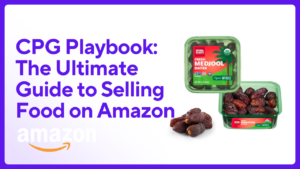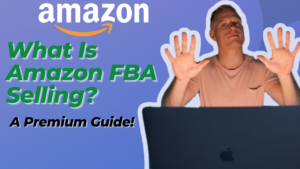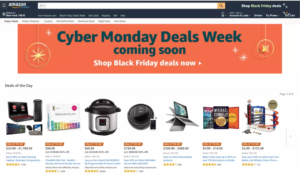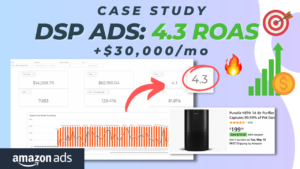Wondering how to to split test your Amazon main image? This guide will show you how, plus key strategies you should impement to potentially drastically improve results.
The main image is extremely important! This cannot be understated. A great image vs. a poor one can make the difference between a stellar launch and a flop!
Main Image Hack – This can boost CTR and SALES by 50-75%
☑️ Step 1) Get your graphic designer to whip up some alternate main images. For example
A) Make the bottle fill up the entire image
B) Edit the image on the bottle and make the MG, COUNT and SERVING SIZE very LARGE
C) Show the capsules/gummies alongside the bottle
D) Show the box alongside/behind the bottle. This is a hack to show any key info in large text. Below is a good example of our client Bold Botanica. You can easily see “30 Capsules” and “Women’s Health” at a glance the box. This important.
See more ideas later in the guide
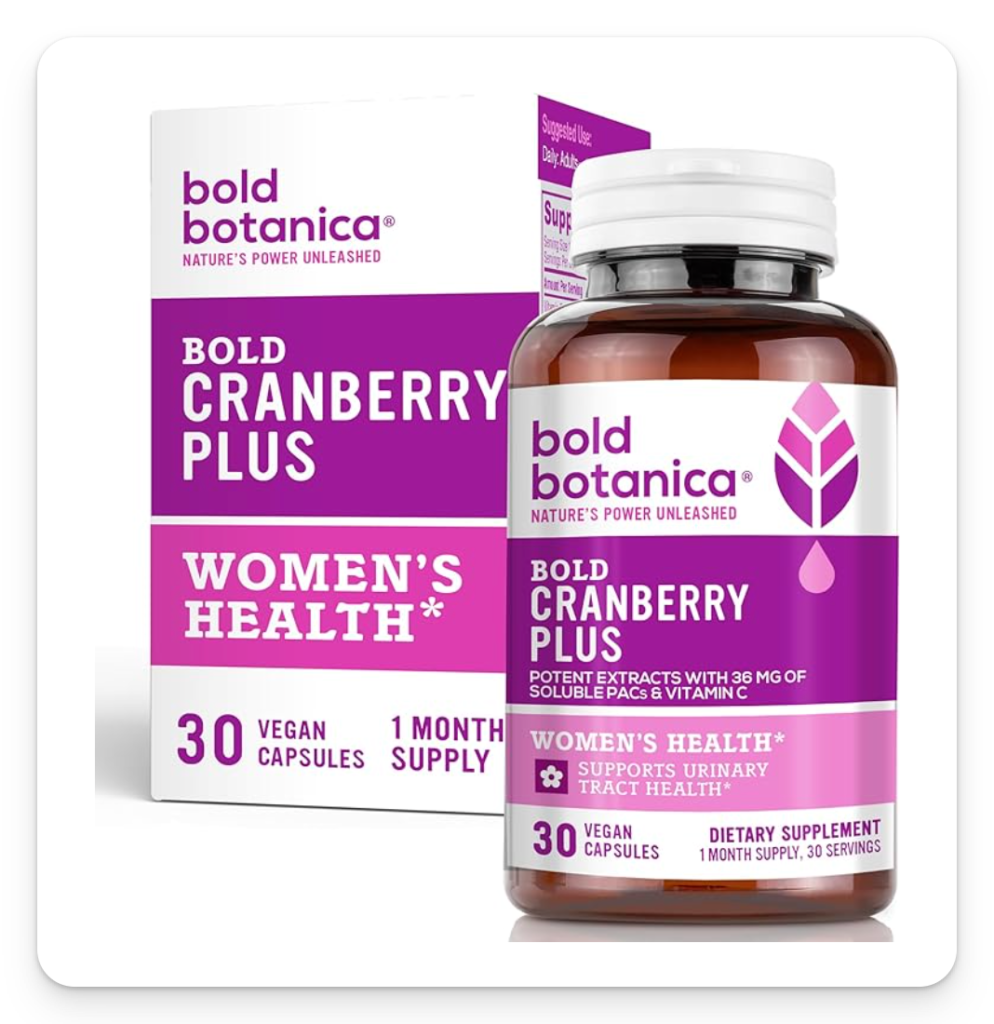
Showing the box: this is a good strategy to test because you can put more info on there.

Show the capsule/gummy alongside the bottle
Step 2) Go to tests in Seller Central → Manage Your Experiments. Run a test with the alternate main image B. You want this image to be clearly different than the current one.
Check back when the test is done in 14 days. You might be surprised by the difference in sales!
Step 3) Run the next test: the winner vs Version C! This time, make sure Version C is a different style.
Step 4) Repeat for 2-3 more rounds or until you’ve tested all of your main image ideas.
Enjoy better results! Now you know that your main image has been thouroughly tested & optimized for the long term!
📝 💰 Long term, this simple hack will likely make you an extra $10,000 of the product’s lifetime.
Have I mentioned that the main image is critical. Think about it. When a shopper is scrolling, there’s only a few main things they see…
- the image
- the price
- the reviews
- the title
Shoppers are glancing at these things very fast! For many shoppers, it’s the visual aspect of the image that they look at most. So that is why you must A/B split test your main images! And the amazing the amazing part is, you can now do this in Seller Central – it’s an amazing new feature.
How many main images should I test? In short, a lot. I say at least 3, but ideally test 5. Or if you want to go all out, 10! The main image is critical to getting clicks, so it’s well worth it. Start by testing A vs B, then test the winner vs C, then test the winner vs D, and so on. There are many different concepts you can try out for the main image. In my opinion, it’s a no-brainer because it’s easy to do and it is one of the HUGE levers to getting more sales! By thoroughly testing main images, you can potentially 2X your sales overnight! It’s been done!
Action plan:
- Get your designer to create 5 main image concepts.
- Split test them all
Make Key Info BIG on the Main Image
Get 3D renderings of the bottle because 1) They often look better than real photos. And 2), even more importantly, you can easily edit what’s on the label – for the purpose of the main image.
You want to be able to edit the label for purposes of the main image, because it’s very important to A/B test the main image – which will essentially be a picture of the bottle.
Think about this. What is the key info that customers are looking for? Make that boldly visible. Use complementary or opposing colors.
📝 Don’t worry – its fine if the actual physical label doesn’t exactly match what’s on Amazon.
☑️ Case study: we drastically improved CTR for a client selling healthy snacks after adding the size of the bag in large text on the main image. This exploded their sales!

📝 Checklist – Main Image
- Get a 3D rendering made
- Make the key info very large on the label
- Milligrams/grams
- Size/count
- Key benefits
- Key ingredients
- Key features
- Use complementary and/or opposing colors to make key info stand out and very easily ‘glanceable’
- Run A/B tests. Do this in Manage Experiments in Seller Central.
The below image demonstrates how on most bottles, the size and count is too small to read. The green arrows indicate bottles where you can see it at a glance. Overall, bigger is better!
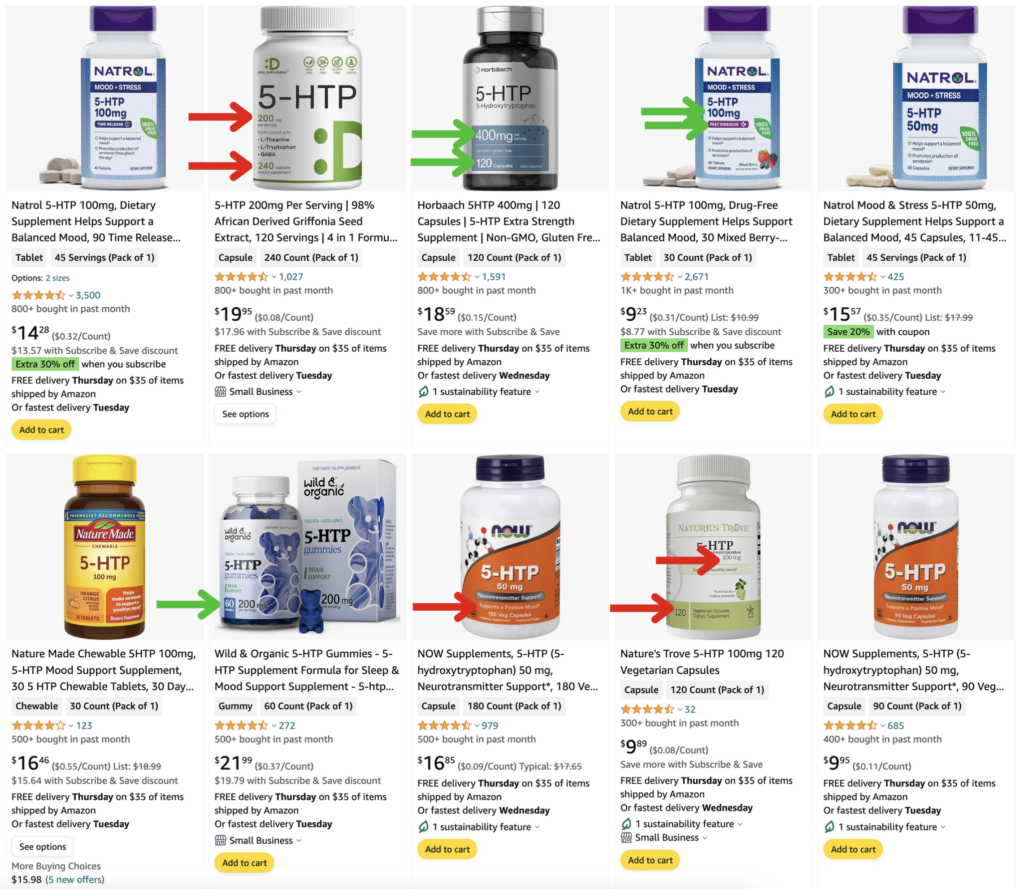
In the ‘products based on this item’ section, images are even smaller! So you should think about this as well when considering how big to put the key info in the main image.
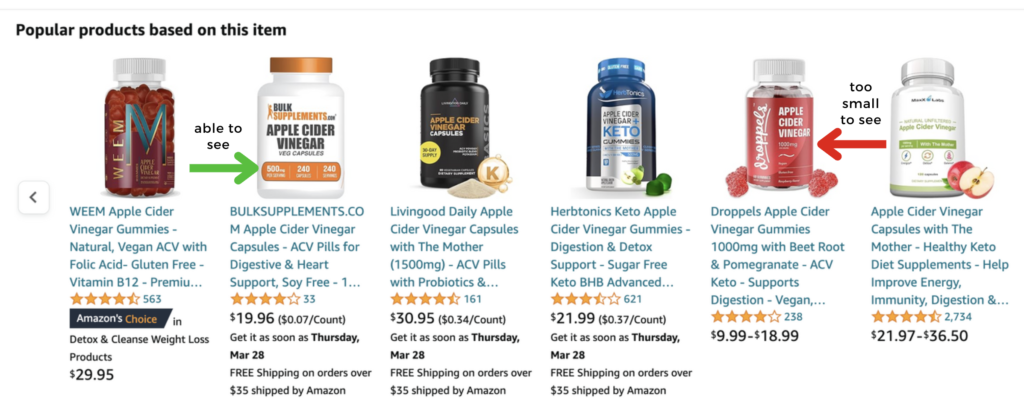
Case Study: 61% Increased Sales After 2 Rounds of Main Image Experiments
☑️ Case Study: Just by changing the color, CTR almost DOUBLED! It increased from 0.9% to 0.17%! I was very surprised that a simple color change from red to blue would have this drastic effect! In turn the units sold nearly 2X’d – from 13 to 21! Absolutely incredible.
We had a white iPhone for the longest time. Then I had the idea if a more vibrant color iPhone would get more clicks & sales. So we tested it vs an orange one, and sure enough, it performed better.
But luckily, we didn’t stop there! The next text of orange vs blue was incredible! Had we just called it good after the first A/B test, we would’ve lost out on almost double the sales! The blue turned out to perform almost twice as well as orange. Gotta love it!
Test 1: Orange outperformed white


Test 2: Blue is nearly 2x better than orange! 🤯
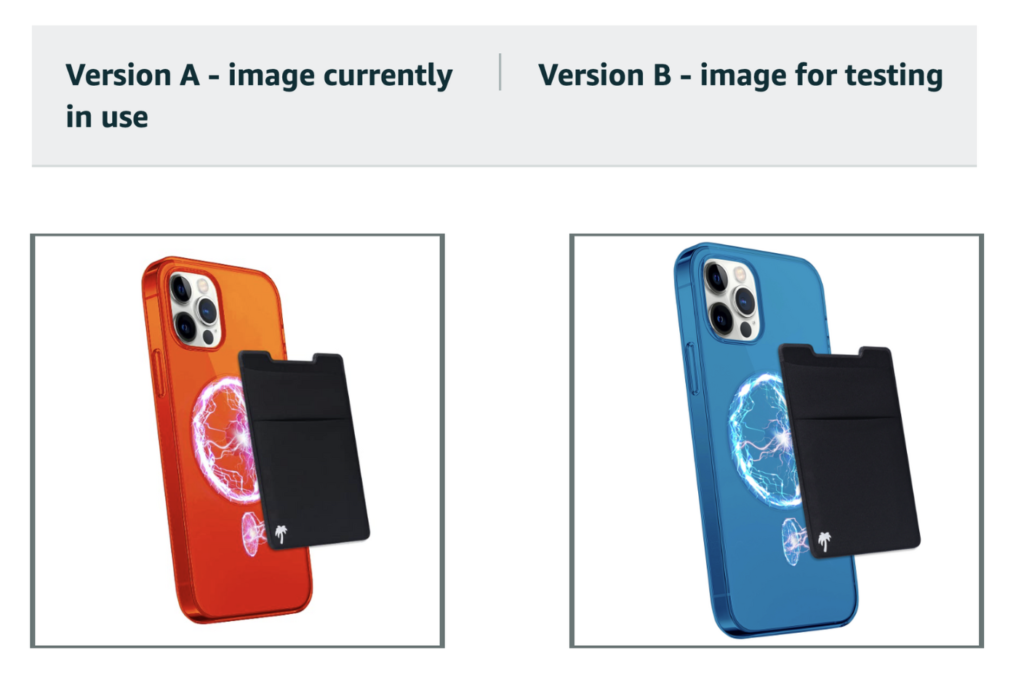
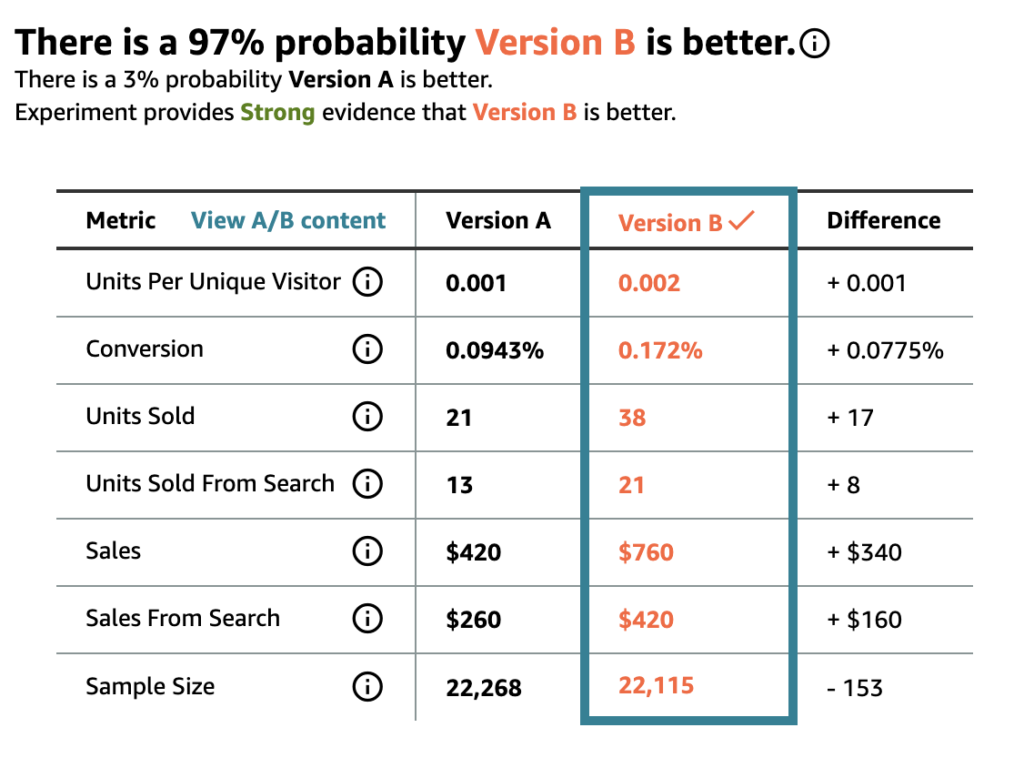
Main Image Ideas for Supplements

Showing the back of the bottle. Showing a highlight bubble “Advanced weight loss”. Showing the gummies next to the bottle.

Show the box. This is something to test.

Showing the box: this is a good strategy to test beacause you can put more info on there.


Showing the powder inside the capsule. “30-DAY SUPPLY” is large and easy to read – good.

Wide bottle = fills up the whole image.

Show the flavor with a fruit.

Clear bottle.

Good example of showing the key numbers in large, glanceable form. 500MG, 240 CAPSULES, 240 SERVINGS.

Show the capsule and the fruit.
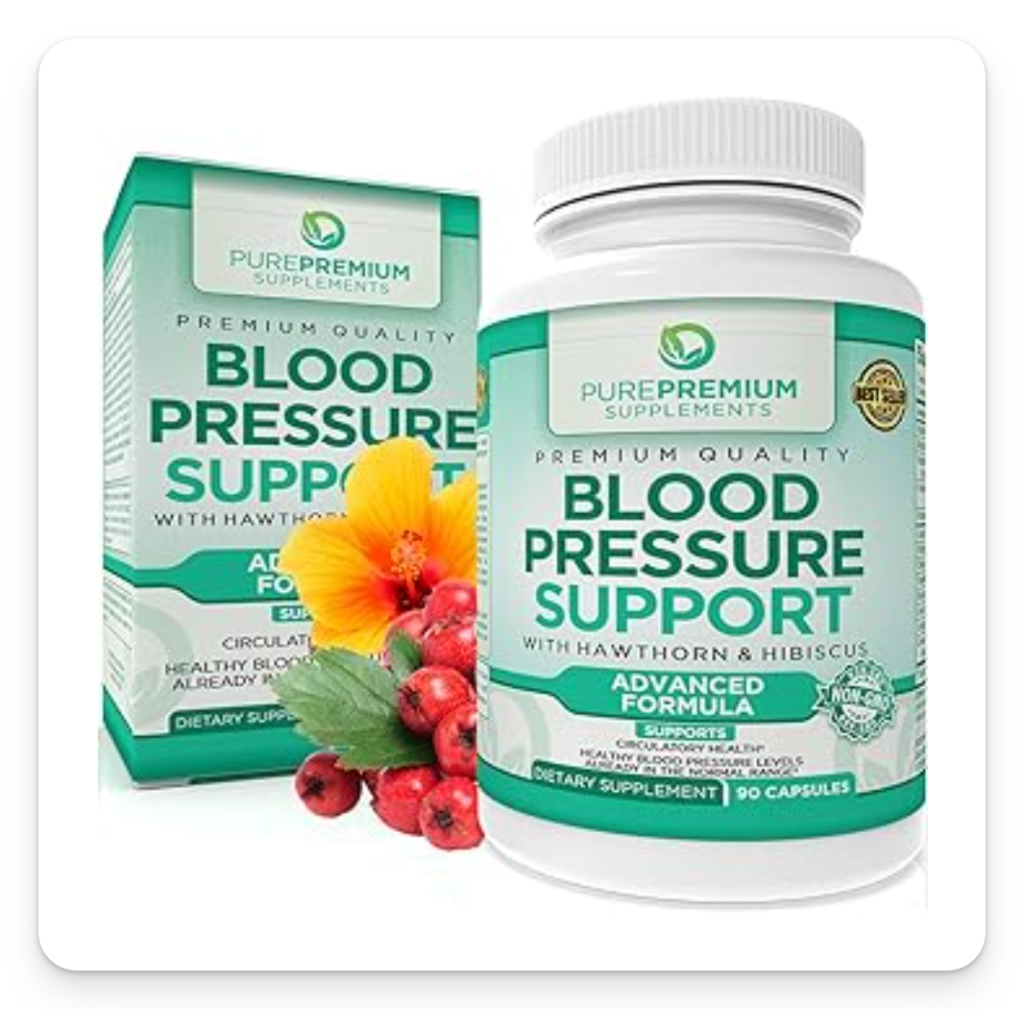
Showing the ingredient / herb flower.
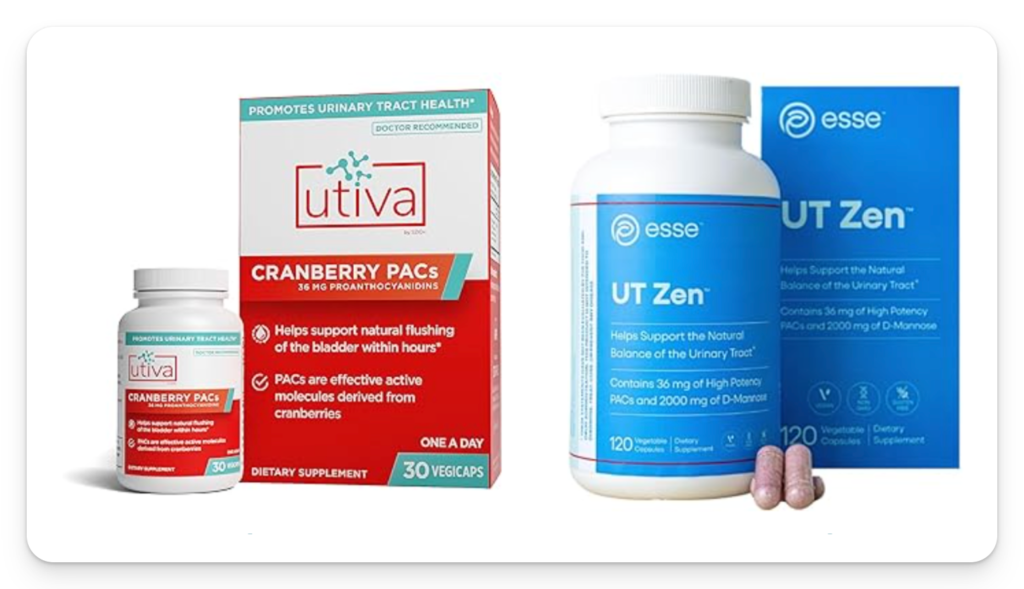
The box on the right is poorly lit – bad.
How Do I Make Sense of the Results?
When an experiment is done, it shows you this data chart. The key metric to look at is Units Sold From Search. This means that you got more clicks in search – meaning a higher CTR.
For some reason, it does not show CTR (click through rate) specifically… It appears that Amazon is only measuring conversion data and not click data. I certainly hope they release CTR experiments.
The only way to AB test CTR specifically is to do it manually.
The rest of the data is more useful when testing gallery images and A+ content because it has to do with CVR (conversion rate).

- Units Per Unique Visitor – This is calculated by dividing the total number of units ordered by the number of unique visitors who participated in the experiment. It’s important to note that only those visitors who were exposed to the experimental content are included; not every visitor to the product detail page is counted.
- Conversion Rate – This metric represents the ratio of customers who made a purchase to the total number of customers included in the experiment.
- Units Sold – The aggregate of units purchased by customers during the experiment.
- Units Sold From Search – This includes units purchased by customers who encountered the product through the search function on Amazon during the experiment.
- Sales – Represents the total sales from all product offerings to customers participating in the experiment.
- Sales From Search – Accounts for sales from all product offerings to customers who discovered the product via the search page during the experiment.
- Sample Size – Refers to the total number of unique shoppers who were logged in and saw the experimental content. Note that not all shoppers who visit may be counted as part of the experiment. Variations in sample size are considered normal, and adjustments are made during result calculation to account for these differences.
Am I Eligible?
You must Brand Registered and the ASIN must have “sufficient traffic”. Amazon states thiss means ”at least several dozen orders per week”. It kinda makes sense. Without enough traffic, you can’t run a sufficient AB test.
- Enough traffic
- Brand Registered
How to I Set Up A/B Tests?

Step 1)
Go here in Seller Central: https://sellercentral.amazon.com/experiments/dashboard.
Step 2)
Click Create a New Experiment → Product Images.


You can now test everything on the listing! It’s a really amazing new functionality.
Step 3)
Choose the product → Upload Version B → Uncheck “Experiment with supporting images” → Schedule Experiment.

Step 4)
Schedule & Submit for Validation. At least 4 weeks is recommended. It may take some time to get approval. Check back in a few days to make sure it did not fail validation. Turn on Auto-publish so it automatically publishes the winner.
How the Test Works
Throughout the duration of an experiment, shoppers of your ASIN’s content are divided into two segments at random. One segment encounters Content Version A, while the second is presented with Content Version B.
This division remains constant for the length of the experiment, meaning content does not alternate over time; both content versions are concurrently displayed, but each is visible to a separate customer group.
Those in the experimental segment will encounter the test content across all platforms where it appears, including in search results, on the product detail page of the ASIN, and in the cart/checkout.
📝
Tips & Tricks
Think about how to stand out from competition.
Get creative and think outside the box about how you can make your main image stand out. Research competitors to see what’s out there. But don’t limit yourself to existing ideas!
Make sure Version A and B are clearly different.
At first, test styles that are very different. Then, once you figure out which style is best, make smaller changes to refine what works best.
Use a creative expert that knows Amazon.
Not all graphic designers are well-versed in Amazon strategy. It’s important that the designer is an expert at Amazon marketing. Main image strategy on Amazon is different than on Shopify!
Test in 4-week blocks.
Amazon recommends 8-12 weeks, but 4 weeks should be fine, as long as there is enough traffic. Make sure to let the experiment run its full course.
Test one ASIN at a time.
A best practice is to consistently use the same ASINs for each variation in the experiment. Avoid using the experiment to compare different ASINs. Ensure each test version is applied to identical ASINs before starting the experiment.
Run A/B tests once a year
A crucial strategy is to conduct A/B testing regularly, across various seasons. This allows you to deeply understand your audience and their preferences, which is key to boosting sales and profitability. Regular A/B testing is an effective method to gain insights into your audience’s needs.
Test at least 3 main images
This means running at least 2 rounds of tests. Don’t stop after the first round! For best results, test 5-10 main images to determine the ultimate winner. Even Amazon recommends “running multiple back to back experiments”.
Conclusion
The main image is a very important piece to success on Amazon. Test ****several main images. Get your designer to make several main images. Think outside the box. AB test them all. It’s a no-brainer way to maximize results.



